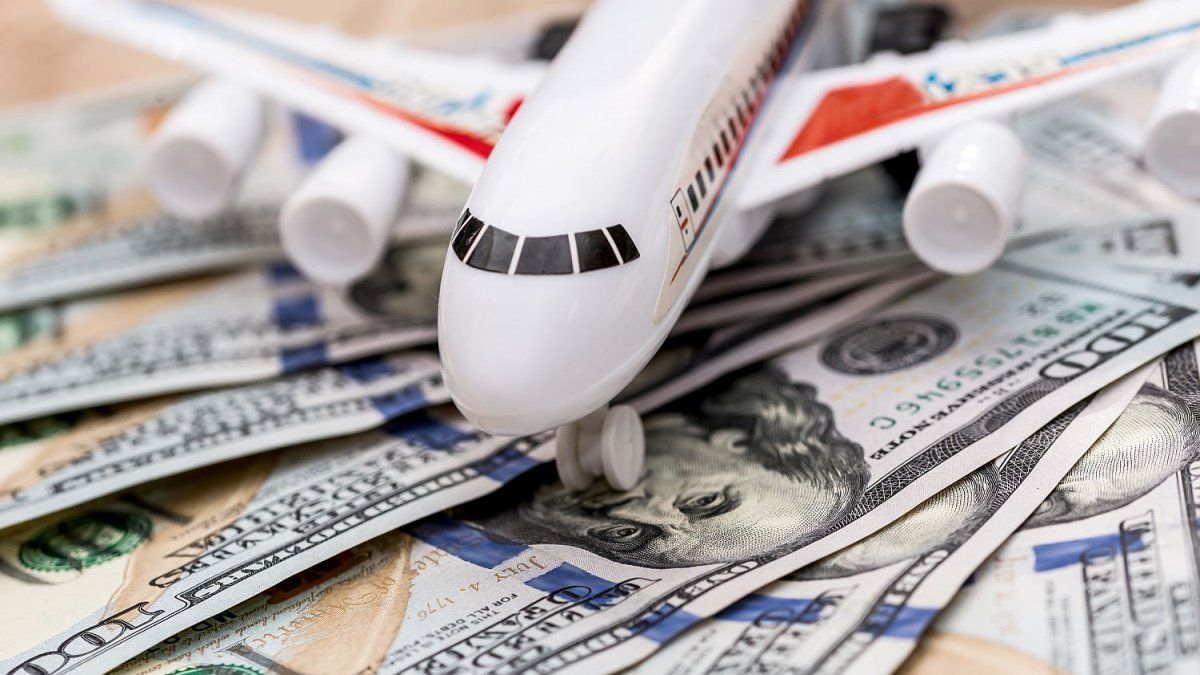For the first time since last October, in June, the current account operations of the foreign exchange balance recorded deficit. It was of US$223 million. And this is because, although the net income of foreign currency from foreign trade in goods (exports minus imports) was positive at US$795 million, Interest, travel, transportation, card payments and services accounts were negative by US$1,018 millionaccording to records from the Central Bank (BCRA).
Of the US$1.018 million The most important net expenditure in June was that of “travel, tickets and other card payments” for US$538 million. There were expenditures of US$696 million and income of US$158 million. So far this year, May and June were the months with the highest outflow of foreign currency for this sector for seasonal reasonsbut also because the exchange rate benefits trips abroad due to the rising prices of local tourist destinations.
tourism1.PNG
Argentina is expensive in dollars: local tourism data
Due to fewer tourists and a drop in the purchasing power of local travellers, In May, hotel occupancy fell by 24.7% year-on-yearaccording to the latest report of the sector compiled by the National Institute of Statistics and Census (INDEC).
In the fifth month of the year, some 2.4 million overnight stays were recorded in hotels and for hoteliers, according to the organization. And the nights in which residents and non-resident travelers slept in establishments showed a decrease of 28.0% and 12.2%. impact of rising prices in dollars, due to the phenomenon of a stagnant dollar and inflation in pesos, it is evident.
According to the tourist regions, The city of Buenos Aires had the highest percentage of overnight stays in the month, with 27.6%: about 297,146 people accommodated. It was followed by Patagonia, with 17.1% and 183,770 guests. The CABA region was also the preferred region for non-resident travelers: it accounted for 57.1% of the total overnight stays.
Falls in tourism
The Official statistics for Mayshowed that the most visited locations by region were: Mar del Plata (Buenos Aires), Puerto Iguazú (Litoral), city of Salta (North), city of Mendoza (Cuyo), city of Córdoba (Córdoba), and San Carlos de Bariloche (Patagonia).
The drop in hotel occupancy levels is directly linked to the decline in the level of foreign touristswho find it more expensive to vacation in the country, after the devaluation.
In June, 330 thousand foreign tourists arrived, 110 thousand less than the same month last year. That is, a 25% dropIf we consider the data for April and May, a total of 400,000 fewer tourists traveled to Argentina.
This decrease – due to the increase in the price of Argentine dollars – It occurred mainly in visitors from Uruguay, Chile, Paraguay, the United States, Spain and France.
According to INDEC data, in terms of accommodation categorythe highest monthly occupancy rate (TOH) corresponded to 4 and 5 star hotels, with 43.9%; followed by three-star hotels, apartments and boutiques, with 33.0%. The categories with the highest room occupancy during the weekends were: 4 and 5 star hotels, with 41.4%; and three-star hotels, apartments and boutiques, with 34.2%.
Source: Ambito




